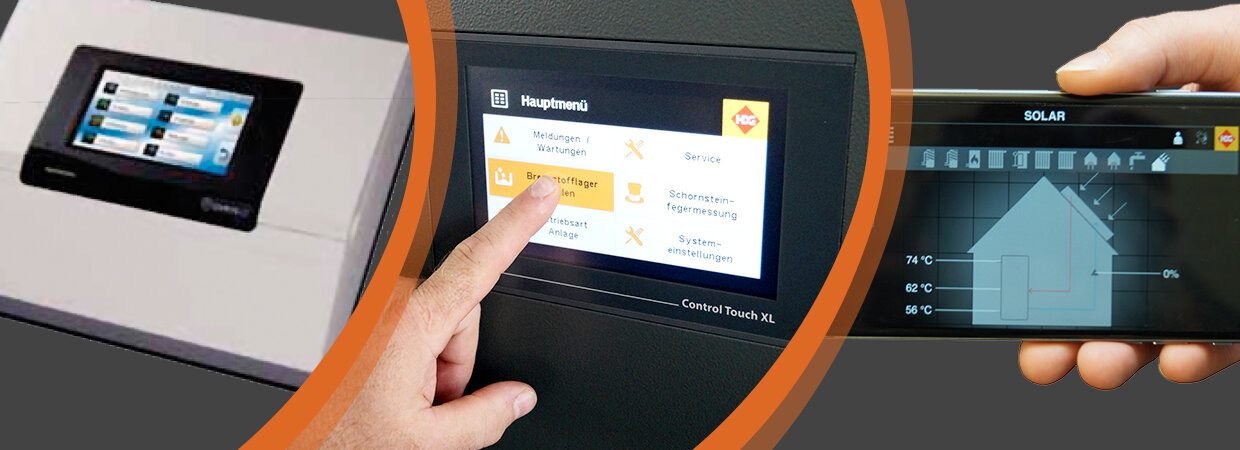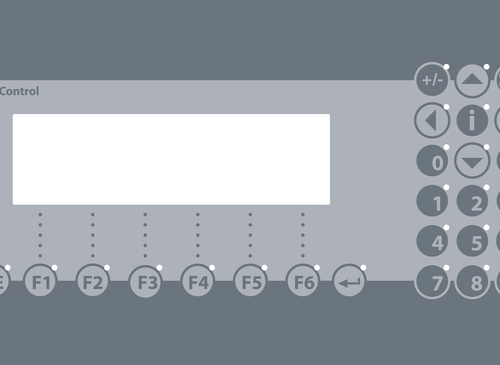The latest generation Lambda controlled boiler 90% plus operational efficiency. The HDG EMD-C215 controls all the processes required to maximise combustion and fuel efficiency.
EMD Epis Operation cycle
Start up.
Fuel is incrementally fed on to the step grate system, and automatically ignited, primary and secondary air is accurately added, ensuring that the fire is quickly established. Once the fire has become established, the controller changes from ignition mode to Lambda control, the controller optimises combustion and emission levels by using information provided by the Lambda sensor. The Lambda sensor continuously samples the flue gas. Information gathered from this analysis allows precise primary and secondary air actuator adjustments, guaranteeing low fuel consumption and ensuring maximum annual efficiencies are achieved.
Automatic ash removal & heat exchanger cleaning
This automatic processes helps maintain efficiency and cleanliness, products of combustion removed from the heat exchange surfaces are removed with the ash.
Back-end return temperatures
This is also managed using one three way mixing valve and two PT 1000 temperature sensors. A sensor at the top of the accumulator and one at the bottom operate in conjunction with one another to achieve this control. When the boiler is first ignited water circulation is limited to the heat exchanger until the temperature has risen to 60°C, this is a precautionary measure to prevent corrosion within the boiler water jacket. EMD-C215 controller has a residual heat utilisation programme, when the temperature of the water within the accumulator falls 5°C below that of the water within the boiler, the pump is started, this process unloads the heat that was remaining within the boiler and makes it available for use within the building to be heated.
Integrated component protection.
During dormant periods (possibly summer) the component protection program is always operational. All electrical components are energised periodically, the Lambda sensor is heated, the boiler ventilated and the pumps and mixing valves are energised. This process extends component life and efficiency.
Accumulator loading
The SPS control monitors the accumulator temperatures at the top and bottom of the vessel. When the top sensor detects that the energy has been used in the heating system, by the temperature dropping below an adjustable set point, the SPS controller starts the ignition process. Using pre-set parameters the fuel chamber is loaded with fuel, and ignited either by residual embers from the previous firing, or by the use of an electric igniter. The fire is then developed gradually by adding increasing amounts of fuel and primary air until it is established. Once the SPS control is satisfied that there is good fire bed it changes from pre-set parameters to dynamic combustion control using the lambda sensor and combustion chamber temperature.
Operation and Combustion
During combustion control the fuel and primary air are adjusted to maintain the combustion chamber temperature, enabling the Compact range of boilers to work with a variety of fuel types and qualities. This ability is further enhanced by being able to re-commission the Compatronic with different fuel characteristics, when the available fuel changes, and store this information as a separate fuel type. The SPS Control can store up to three different fuel types. The Lambda sensor is a very important aspect of the boiler control. By sensing the amount of oxygen in the flue gas the SPS control delivers precisely the correct amount of secondary air to the wood gas being given off by the fuel in the combustion chamber. This is the second part of the gasification process, and is where the extremely efficient and clean burning characteristics are achieved. If too much secondary air is provided, the heat being developed during combustion is chilled and energy is lost. If too little secondary air is introduced the volatile gasses are not fully burnt, and pass through the boiler as smoke which can condense as tar in the flue. This leads to dirty and inefficient boilers, and wastes a lot of the volatile gas available in the fuel. Due to the nature of wood as a fuel the amount of volatile gas being produced varies greatly minute by minute, and so a boiler with fixed secondary air cannot burn efficiently.
Lambda stop
Additional features of the SPS control are Lambda stop, where the fuel rate is paused due to the amount of volatile gas being produced, fuel stop to prevent over filling of the fuel chamber, and a number of safety features. Some of the safety features are boiler isolation when the fuel store has been entered, when there is low water pressure in the heating system, or if a foreign body forms a blockage in the feed system. The SPS also controls the heat exchanger cleaning system, walking grate and ash removal system to further reduce the amount of regular manual input required on site.
Design
- Control cabinet with wall-mounted housing 60 x 80 cm, including fasteners manufactured according to BS EN 60335 and BS EN 50156. Cable entry from above
- Emergency stop switch, operating switch, operation and error LED indicators PLC control with 16 digital inputs and outputs, measured value acquisition via CAN analogue module with 8 inputs and 4 outputs, connection for external requests
- Display (8 x 40 lines), regulator transformer 24 V-DC/24 V-AC/12 V-AC, with safety automatics, terminal strip with screw terminals for 24 V and 230 V, motor protection with auxiliary relays for feeding, reversing of feeding, discharging, ash removal, current transformer for the reverse feeding, automatic switch-on after a power outage, relays with plug sockets, everything hooks up in the control cabinet. The necessary connection cables are readily connected to the HDG Compact. The 10 m long connection cable must be connected to the control cabinet during installation
Features
- Feeding system TBZ 150 or TBZ 80 via motor safety switch with motor current monitoring, automatic reverse
- Control of HDG discharge with “Overload discharge” safety end position switch
- Control of the suction turbine with level sensor for the TBZ 80 with pellet delivery system
- Control of the automatic clean-up procedure with end position monitoring and winding protection
- Control of the step grates with automatic ash removal via motor protection switch
- Control of return pump, return mixer with integrated residual heat utilisation
- Control of the primary and secondary air servo motors with air flap interlocks
- 7-day program with two adjustable boiler activation times daily
- Buffer tank management, boiler and chimney ventilation program
- 230V output for external error signals, cycled
- Control of the Rotation fans
- Level monitoring with “Material Stop“ function
- Combustion chamber temperature monitoring with “Combustion chamber temperature stop“ function
- Lambda sensor with automatic calibration and “Lambda stop“ function
- Control of the burning air flow fan and the cyclone dust separator of the HDG Compact 150-200
- Integrated error message memory, store for three fuels, system clock
- Potential-free error output, operating time counter
- Connection of end position switch “Fuel store“ and water flow failure protection
The advanced controller has an unparalleled reputation for reliability.
Communication to the boiler it’s via a data bus needing just two wire connection. This reduces installation time and cost. The boiler itself comes fully wired with ready to use cabling.
Webserver
The EMD Epis controller can be linked to external remote access webserver. This allows full remote interface as well as email messaging of service and maintained tasks.



